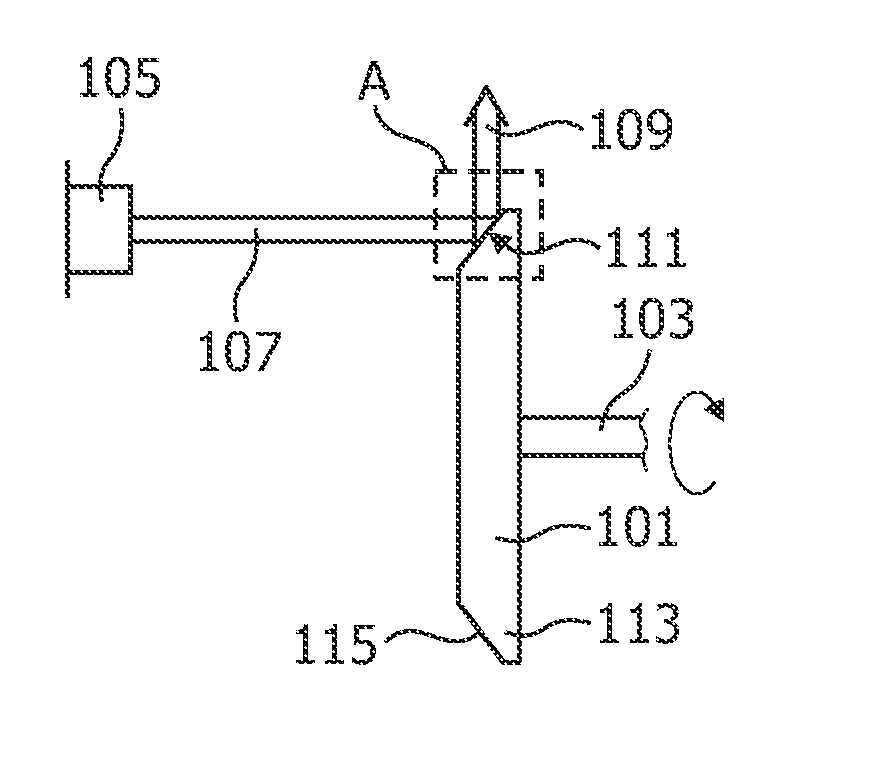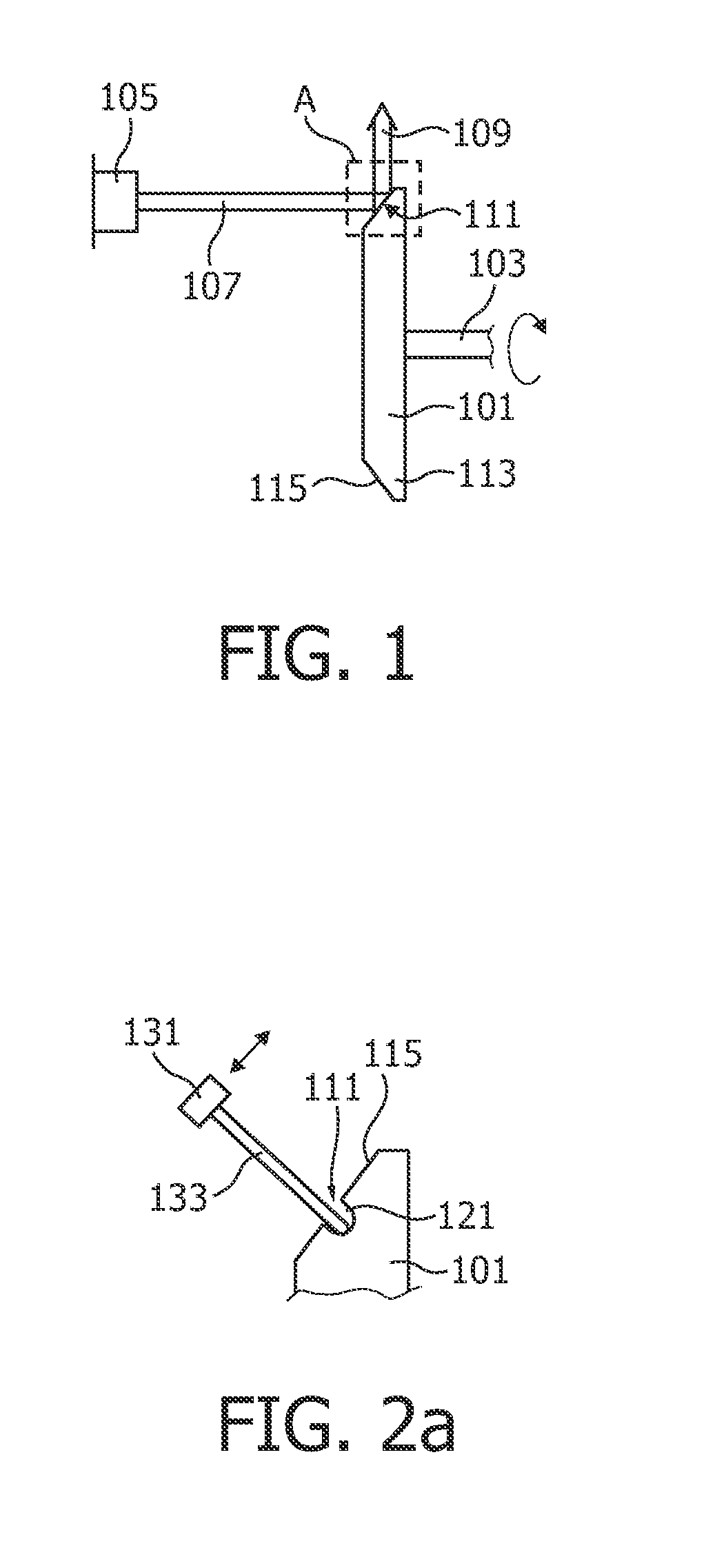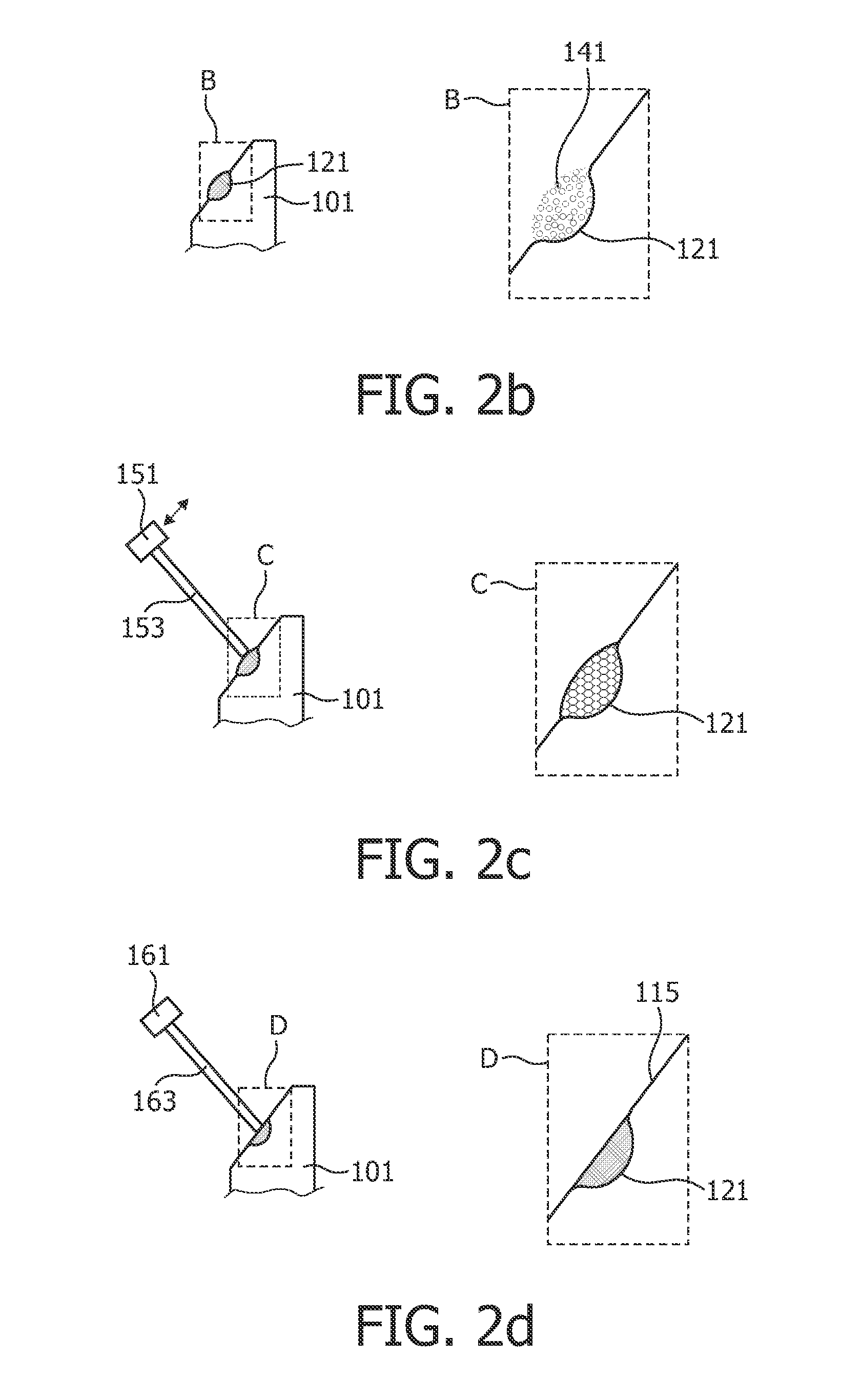Method and apparatus for applying material to a surface of an anode of an x-ray source, anode and x-ray source
a technology of x-ray source and surface, applied in the direction of x-ray tube target treatment, x-ray tube target and convertor, etc., can solve the problems of damage, x-ray beam may start flickering more and more, damage at the surface of the anode, etc., to avoid contamination and reduce the number of necessary light sources
- Summary
- Abstract
- Description
- Claims
- Application Information
AI Technical Summary
Benefits of technology
Problems solved by technology
Method used
Image
Examples
Embodiment Construction
[0063]FIG. 1 shows an X-ray tube arrangement including disk-shaped anode 101 and an electron source 105. The anode 101 is disk-shaped and comprises a heavy metal such as tungsten, rhenium or molybdenum. At its circumferential border 113 the anode 101 comprises a slanted surface which acts as an X-ray emitting surface 115 for emitting an X-ray beam 109 when irradiated by an electron beam 107 coming from the electron source 105. At the focal track 111 where the electron beam 107 impacts onto the X-ray emitting surface 115, cracks or recesses may occur after continuous operation of the X-ray tube.
[0064]FIGS. 2a to 2d show the region A in the neighbourhood of the focal track 111 as indicated in FIG. 1 during different process steps of an embodiment of the method according to the present invention.
[0065]As shown in FIG. 2a, a recess 121 formed on the focal track 111 may be detected and its depth may be measured using a laser beam 133 coming from a first laser 131. As indicated by the arr...
PUM
| Property | Measurement | Unit |
|---|---|---|
| Power | aaaaa | aaaaa |
| Structure | aaaaa | aaaaa |
| Size | aaaaa | aaaaa |
Abstract
Description
Claims
Application Information
 Login to View More
Login to View More - R&D
- Intellectual Property
- Life Sciences
- Materials
- Tech Scout
- Unparalleled Data Quality
- Higher Quality Content
- 60% Fewer Hallucinations
Browse by: Latest US Patents, China's latest patents, Technical Efficacy Thesaurus, Application Domain, Technology Topic, Popular Technical Reports.
© 2025 PatSnap. All rights reserved.Legal|Privacy policy|Modern Slavery Act Transparency Statement|Sitemap|About US| Contact US: help@patsnap.com



